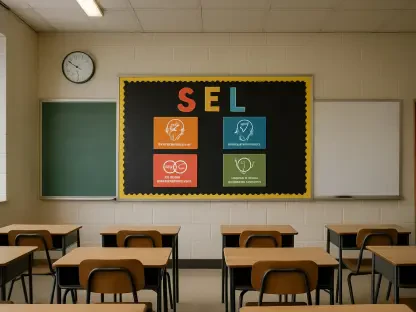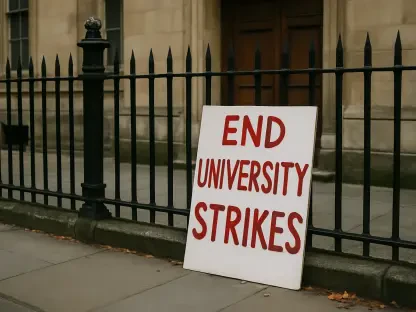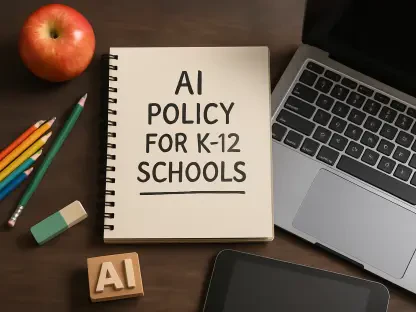In the heart of rural Indiana lies a small school district, Union School Corporation, situated in the quaint town of Modoc. Facing an existential threat amid modern digital learning trends and state legislative actions, this situation raises profound questions about the viability and role of virtual schools in supporting struggling rural districts. With legislation threatening to close Union School Corporation by 2027, the debate transcends educational performance and ventures into the financial and political interplay affecting the future of education. The implications of virtual schooling transformations are significant, not only for Union but for many rural districts grappling with similar challenges across the nation. The community’s embrace of a digital learning platform reflects an effort to overcome fiscal constraints and sustain educational operations amidst the backdrop of Indiana’s diverse landscape of farm fields and winding dirt roads.
The Financial Dynamics of Virtual Schools
The partnership between Union School Corporation and Indiana Digital Learning School (INDLS) underscores a prevalent theme in modern education: leveraging virtual platforms for economic survival. The district’s collaboration with Stride Learning, formerly known as K12 Inc., transformed its financial landscape, propelling Union from the brink of collapse to a revenue-generating entity. Hosting approximately 7,500 students, INDLS serves as a digital stronghold, channeling substantial oversight fees directly into Union’s coffers. This financial arrangement illustrates how struggling districts might capitalize on the burgeoning demand for online education. Yet, it also highlights potential conflicts of interest, as the district’s financial lifeline naturally aligns with INDLS’s success. These entanglements have provoked scrutiny from state legislators, who question whether the financial gains compromise the district’s educational mission.
Union’s transformation was both a strategic maneuver and a desperate attempt to avert closure, yet the reliance on virtual education as a financial strategy introduces a host of novel challenges. Critics argue that prioritizing financial gains over educational outcomes suggests deeper systemic issues. The concerns are exacerbated by historical precedents of mismanagement and fraud in similar setups elsewhere, prompting legislative intervention. Superintendent Galen Mast and Union’s school board president, Christina Ogden, have publicly asserted that the closure mandate does not reflect educational deficiencies but rather a strategic maneuver by the state to capture lucrative virtual school profits. Meanwhile, legislators like J.D. Prescott counter these assertions, emphasizing that standardized test scores highlight a worrying trend of underperformance that must be addressed.
Legislative Challenges and Educational Accountability
The legislative mandate compelling Union School Corporation’s closure by 2027 serves as a microcosm of national debates over accountability and governance in virtual schooling. The abrupt and seemingly unilateral legislative action, devoid of transparent debate, has cast a shadow of uncertainty over the Union community. This decision has evoked a visceral response from Modoc’s residents, parents, and other stakeholders, who question the true motives behind such drastic measures. The future of the INDLS program, upon which Union has heavily relied, remains ambiguous, further deepening the sense of apprehension.
At the crux of these challenges is whether entities tasked with overseeing public education should be permitted to benefit financially. Such concerns are not unfounded, given past instances of abuse in similarly structured programs in other states. The debate encapsulates a broader tension between state-driven mandates and local autonomy, where the potential for financial profit collides with educational integrity and community trust. The stakes are high: failure to reconcile these priorities could undermine not only Union’s efforts to remain viable but also the larger pursuit of equitable access to quality education in rural areas.
Looking ahead, Indiana Secretary of Education Katie Jenner is set to conduct a review of the state’s online education landscape, a move anticipated to transform the current frameworks governing virtual schools. This review may lead to new protocols aimed at enhancing oversight while ensuring digital learning is directly linked to successful student outcomes. Given the potential ramifications, this evaluation could serve as a blueprint for other states grappling with similar challenges, signaling a pivotal moment in recalibrating online education within the broader public school system.
Community Responses and Broader Implications
Amidst the uncertainty faced by Union School Corporation, community members have rallied around their local schools, voicing their concerns and resisting what they consider unwarranted state interference. For many, the sudden legislative action reflects broader issues in how educational policies are conceived and implemented, often lacking the input of those most affected. Parents like Danielle Baker have become vocal advocates, striving to preserve the benefits that their children have gained through Union’s programs. This grassroots advocacy highlights the intrinsic value communities place on maintaining localized control over educational decisions, a principle that is challenged by the top-down approach of recent legislative initiatives.
The situation in Union School Corporation is emblematic of similar challenges faced by rural districts across Indiana and beyond. The concern revolves around the metrics used to define success or failure in education, which often remain ambiguous and unevenly applied. This uncertainty fuels discussions among educational leaders, lawmakers, and community advocates who seek to understand and address the nuances of virtual schooling’s impact on traditional educational models. Christopher Lagoni, of the Indiana Small and Rural Schools Association, questions the validity of closure thresholds, underscoring the complexities of standardizing performance assessments across varied educational contexts.
Furthermore, the perceived inconsistencies in how different virtual school partnerships are evaluated add layers of complexity to the already intricate debate. Notably, arrangements in districts like Clarksville, led by individuals with political connections, suggest that influence plays a role in determining which partnerships thrive despite similar operational structures. Such disparities challenge the notion of fair governance and equitable access to educational opportunities, prompting calls for a more balanced and transparent approach in school oversight and accountability measures.
Navigating the Future of Rural Education
The collaboration between Union School Corporation and the Indiana Digital Learning School (INDLS) highlights a current trend in education: utilizing online platforms for financial stability. Teaming up with Stride Learning, formerly K12 Inc., helped transform Union’s dire financial state into a revenue-positive situation. Now overseeing about 7,500 students, INDLS funnels significant oversight fees into Union’s budget, showcasing how financially troubled districts can benefit from the growing online education market. However, this partnership also raises concerns about conflicts of interest since Union’s financial health is tied to INDLS’s growth, prompting scrutiny from state lawmakers who are worried that financial incentives could overshadow educational priorities.
Union’s pivot to online education was as much about survival as it was about strategy. Reliance on virtual learning for revenue introduces new challenges, with critics voicing concerns that financial motives may be taking precedence over educational quality. Previous instances of mismanagement and fraud in similar virtual setups have fueled these concerns, leading to legislative scrutiny. Superintendent Galen Mast and school board president Christina Ogden argue that the potential closure was not due to educational shortcomings but a strategic state effort to capitalize on virtual education profits. However, legislators like J.D. Prescott argue that low standardized test scores reveal significant educational inadequacies that need attention.









